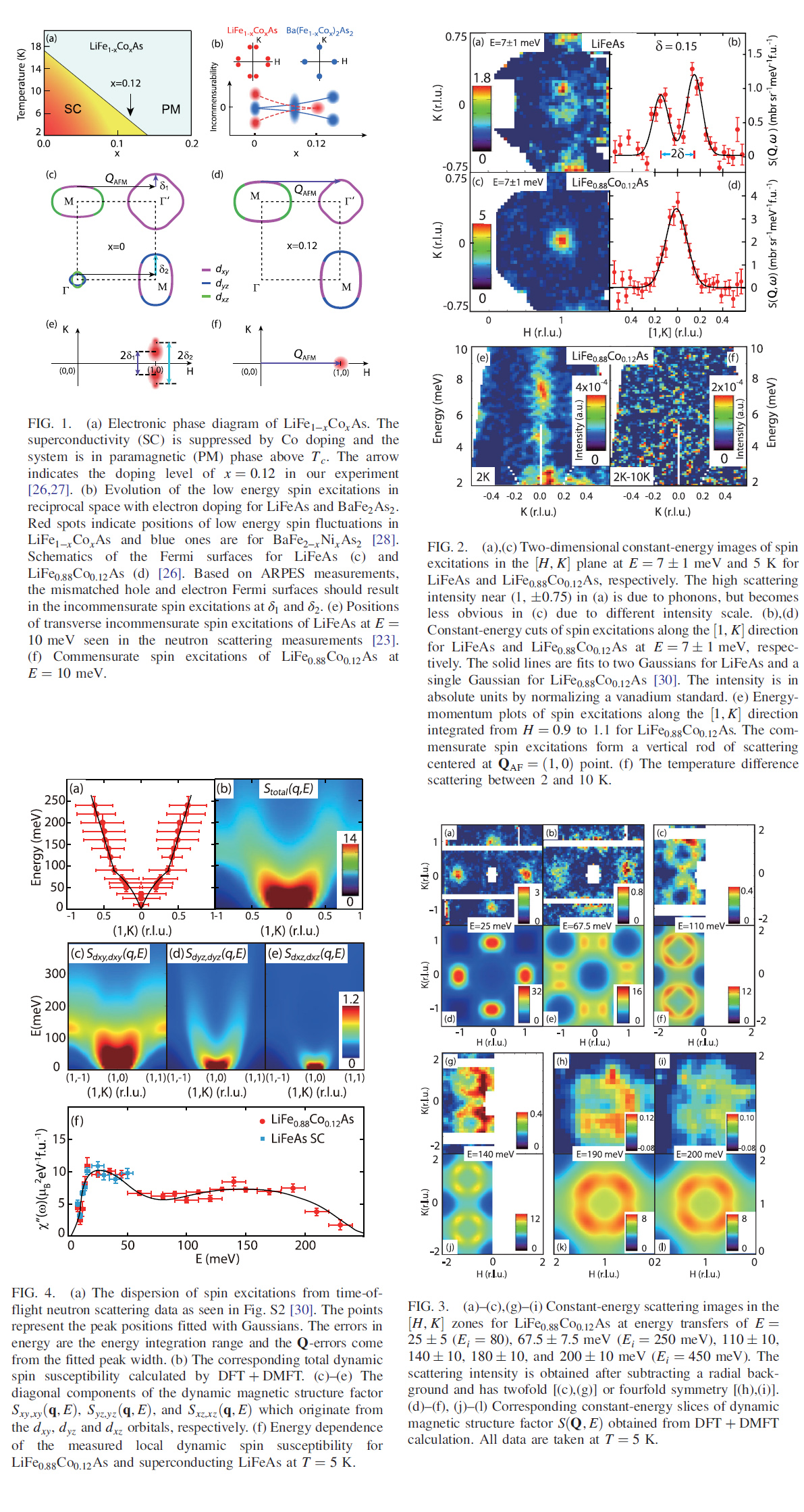LiFe1-xCoxAs体系中轨道选择性自旋激发及其对超导的影响
( Orbital Selective Spin Excitations and their Impact on Superconductivity of LiFe1-xCoxAs )
Y. Li, Z.P. Yin, X.C. Wang, D.W. Tam, D.L. Abernathy, A. Podlesnyak, C.L. Zhang, M. Wang, L.Y. Xing, C.Q. Jin, K. Haule, G. Kotliar, T. A. Maier, and P.C. Dai
Phys. Rev. Lett, 116, 247001 (2016)
We use neutron scattering to study spin excitations in single crystals of LiFe0.88Co0.12As, which is located near the boundary of the superconducting phase of LiFe1?xCoxAs and exhibits non-Fermi-liquid behavior indicative of a quantum critical point. By comparing spin excitations of LiFe0.88Co0.12As with a combined density functional theory and dynamical mean field theory calculation, we conclude that wave-vector correlated low energy spin excitations are mostly from the dxy orbitals, while high-energy spin excitations arise from the dyz and dxz orbitals. Unlike most iron pnictides, the strong orbital selective spin excitations in the LiFeAs family cannot be described by an anisotropic Heisenberg Hamiltonian. While the evolution of low-energy spin excitations of LiFe1?xCoxAs is consistent with the electron-hole Fermi surface nesting conditions for the dxy orbital, the reduced superconductivity in LiFe0.88Co0.12As suggests that Fermi surface nesting conditions for the dyz and dxz orbitals are also important for superconductivity in iron pnictides.

